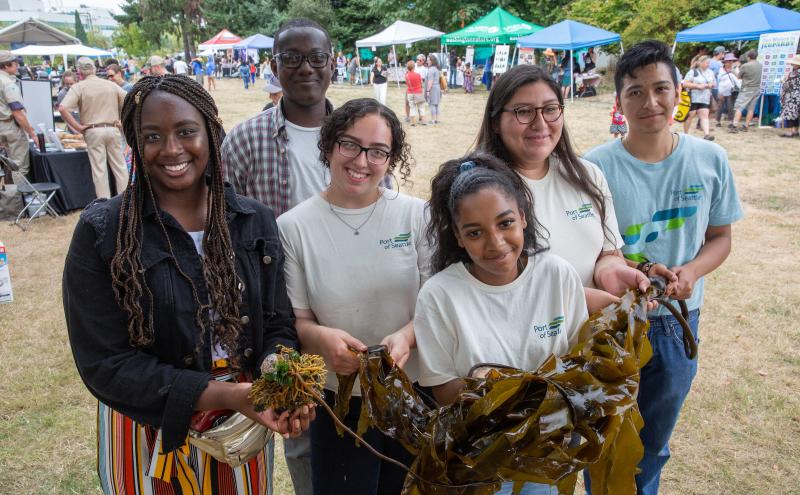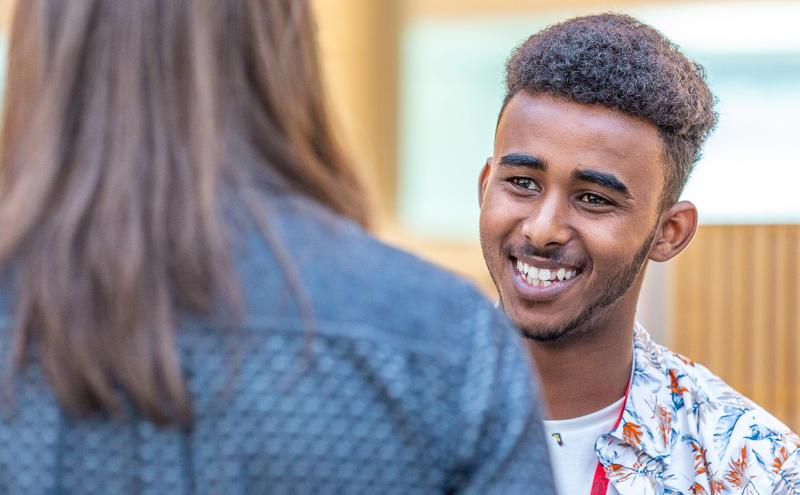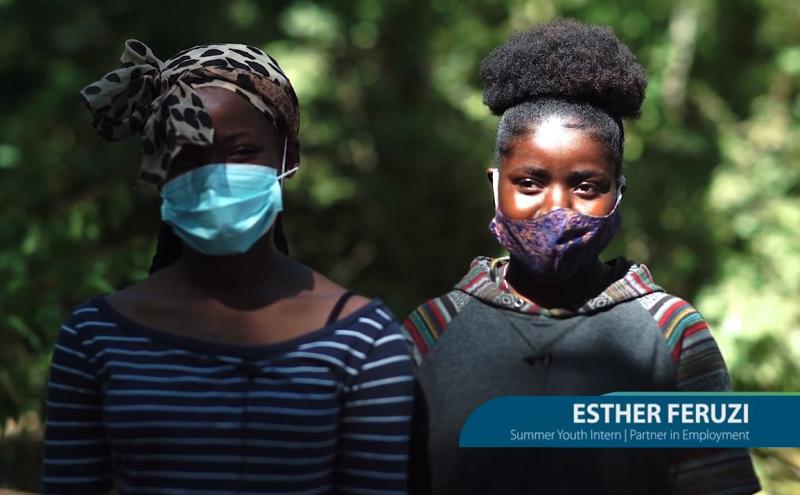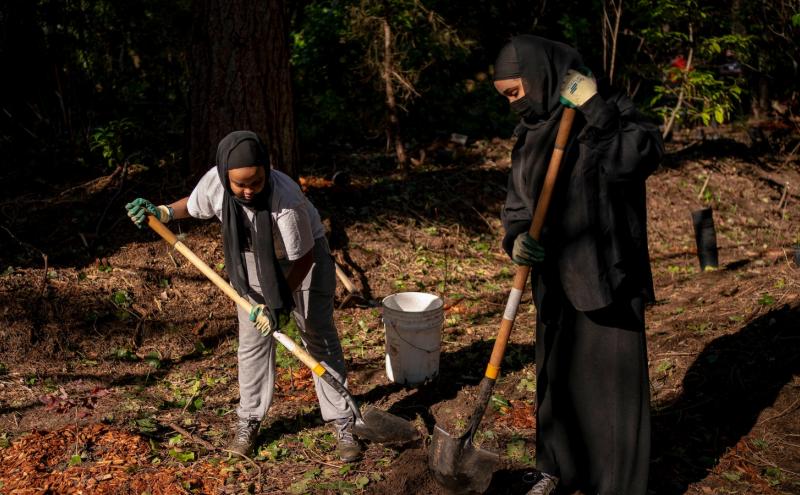
At the Port of Seattle, we often use the term “port-related industries.” You’ll usually see this term used when discussing workforce development (i.e., the ways that we’re training and cultivating the next generation of workers). We use “port-related industries” to refer to the industries of aviation, construction, maritime, and green jobs. I think the first three industries are self-explanatory, but green jobs have always been a mystery to me. For Earth Month, we're finding out more about green jobs and what they are. After talking with some smart people and doing some light internet research, here’s what I found.
What is a green job?
Green jobs are broadly defined as any job or career that is focused on the environment, specifically environmental sustainability and solving environmental problems. Chipper Maney, Environmental Program Manager with the Port, expanded on this definition by saying,
“Green jobs are the management and implementation of sustainable practices affecting the natural environment.”
Chipper and Dierdre Nelis, a college intern working with Chipper, view green jobs as not only the people who are out in the field performing manual labor and work, but also the scientists whose research informs practices in the field, administrators who coordinate logistics and supplies, and any other professional who supports the execution of environmentally sustainable practices.
Carl Hugle, Workforce Development Program Manager for the Port, provided even more nuance. Carl told me about “dark green” and “light green” jobs.
- A dark green job is one that squarely falls in the environmental sciences and sustainability realm,
- A light green job is one that is part of another industry, say maritime, but intersects with environmental sustainability.
“[Green jobs are] very new to a lot of us in the workforce development sector. And at the Port, they’re a relatively new priority for us. We’re still perfecting our strategies to develop and train workers in this industry. We’re still learning,” Carl said.
My thoughts exactly, because while the above information is helpful, I still find green jobs to be broad and kind of confusing. For many people, especially young people, there is not a lot of familiarity or awareness about these careers. My own journey to better understand green jobs didn’t begin by talking with my colleagues but started with a Port Planting Event.
Green jobs in action
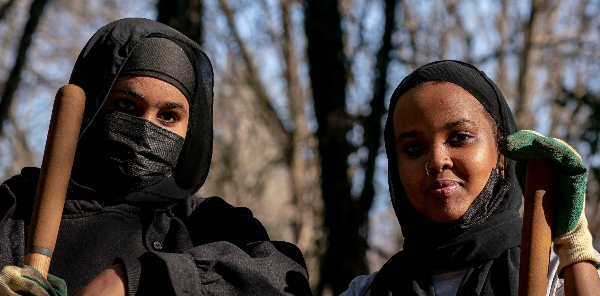
Once or twice a year, the Port hosts Port Planting Events, which are open to community members. The goal of these events is to plant trees, clear weeds and invasive species, and/or some other form of habitat maintenance and restoration. The Port owns hundreds of acres of land around SEA, so there’s a lot of maintenance to be done. The most recent Planting Event was on February 9-10, and it included staff and youth participants from our amazing partner organization Partner in Employment (PIE).
PIE is a non-profit organization based in SeaTac that works to guarantee the long-term economic stability of newly arrived refugees and immigrants in King County by providing tailored assistance in language acquisition, housing stabilization, workforce entry, and job training in higher-wage industries. During the last two years, PIE has been an integral part of the Port’s Opportunity Youth Initiative, a workforce development program that provides youth — primarily youth of color and low-income youth — with paid internships and training in port-related industries.
I was invited to join this Planting Event so that I could write about it, especially about PIE. I was excited for the opportunity and the chance to do some manual labor — a nice change of pace from my desk job. And, fully embracing my ignorance about green jobs, I was excited to educate myself.
On the beautiful, sunny winter morning of Wednesday, February 9, a group of 15 to 20 people, representing both the Port and PIE, gathered in the woods off of 18th Avenue South in Des Moines. We drank coffee, introduced ourselves, received a training from Port and PIE staff about how to plant trees, and then we set out to work. We had a goal of planting 750 trees over the course of two days!
The work was hard, regardless of what role I had. Everyone had three options and most people seemed to rotate through them all. You could dig holes in the dirt large enough to plant a tree in, you could fill wheelbarrows with mulch and cart them to the people planting the trees, or you could carry five-gallon buckets of water from the filling station to the people digging. I started with the mulch, and within minutes was shedding layers of clothing.
Very quickly though, three hours passed, and I think it was largely because of the conversations I was had while I worked. I met several Port colleagues for the first time, even though I’d worked with them virtually for months, if not years, and I was able to talk to several of the PIE program participants.
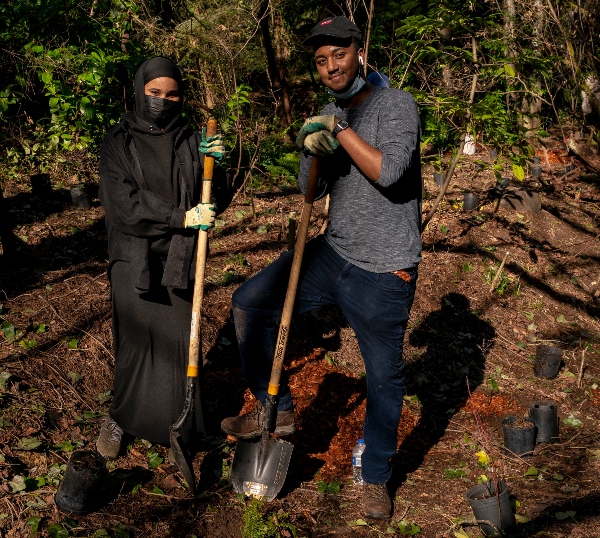
The six youth that participated in the first day of the planting event were all participants in PIE’s Youth Restoration Training Program.
Madeline Cooper, PIE’s Activities Coordinator, shared that this is a cohort-based program run four times per year. For 8-11 weeks, each cohort of 6-12 youth receive a combination of on-the-ground environmental restoration training and classroom training, learning about ecosystems, habitats, and animal and plant life. The youth also earn — $17 per hour – while they learn.
As Madeline said,
“we learn about why this work is important, and we teach our youth technical restoration skills. We also try to introduce our youth to as many professionals as possible, because there is such a variety of types of jobs in this field.”
“I heard about [PIE’s Youth Restoration Training program] from some friends and thought to give it a try,” said Salma, a PIE participant, affirming that she did not know what a green job was before starting the program.
Zakaria, another participant, agreed and added, “I didn’t know about this work, but I like being outside, getting dirty, and being in nature. So, I decided to try it out.”
Big impacts on immigrant and refugee youth
The Planting Event ended with lunch. Sitting on upside down five-gallon buckets, we formed a large circle while we ate and talked. We were joined by Commissioner Hamdi Mohamed, who, like all the youth at the event, is Somali. Commissioner Mohamed answered questions from the youth, and she also asked them questions. Things like, how did you get involved in with PIE? What’s next for you after you complete the program? What does your Somali mother think of you doing this program?
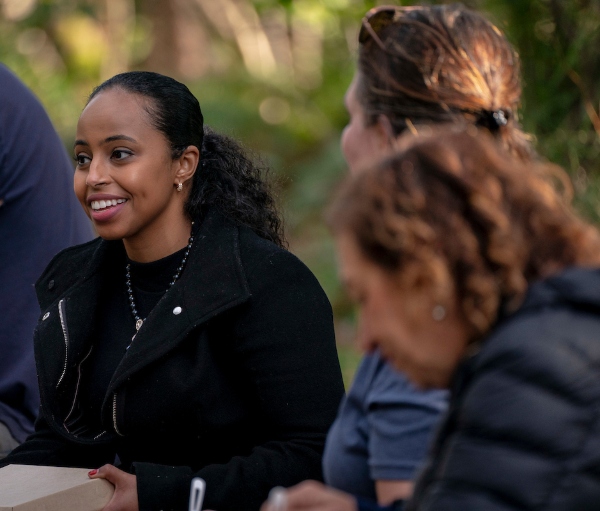
There were a variety of answers from the youth, but there was one thing that stood out to me. PIE’s Youth Restoration Training Program is profoundly impactful for immigrant and refugee youth in our area. It introduces these young people to new possibilities and a new career path. It teaches them valuable skills not only if they want to pursue a green job but also life and professional skills. It allows them to earn a living, while they learn. This, unfortunately, is not a common practice, and it often means that young people choose to work a low-wage, low-skill jobs just so they can make a living, instead of pursuing training opportunities that can set them up to obtain a high-quality, family-wage job in the future. Finally, this program gives young people a sense of place and belonging.
As Commissioner Mohamed commented,
“For organizations and young folks in South King County, it’s critical to help restore and preserve the land where they work and live. It’s also vital that, as a Port, we focus on improving opportunities for green jobs and working with our partners to address our workforce development needs.”
Taking care of our environment is clearly a community need. PIE Executive Director Hien Kieu commented that the refugee families that they serve asked to learn more about the land they live on and how to care for it. So, PIE created its restoration program in direct response to that feedback.
Shouldn’t all our jobs be at least light green?
While many of us, myself included, are still learning about green jobs, it seems that we all have a foundation for this work. “I think everyone has environmental knowledge, simply because we exist in the world. So, I try to bring what we all already know into our [environmental] work,” said PIE’s Madeline Cooper.
There’s no doubt that the Planting Event and the conversations I’ve had with people from the Port and PIE have deepened my understanding of green jobs. I’m clearly no expert, I still have questions, and there are many people who have much more extensive knowledge in this arena. However, I can say that we all, should be a little more focused on how our work is affecting the environment. Seeing as we only get one shot on this planet, shouldn’t all our jobs be at least light green?

